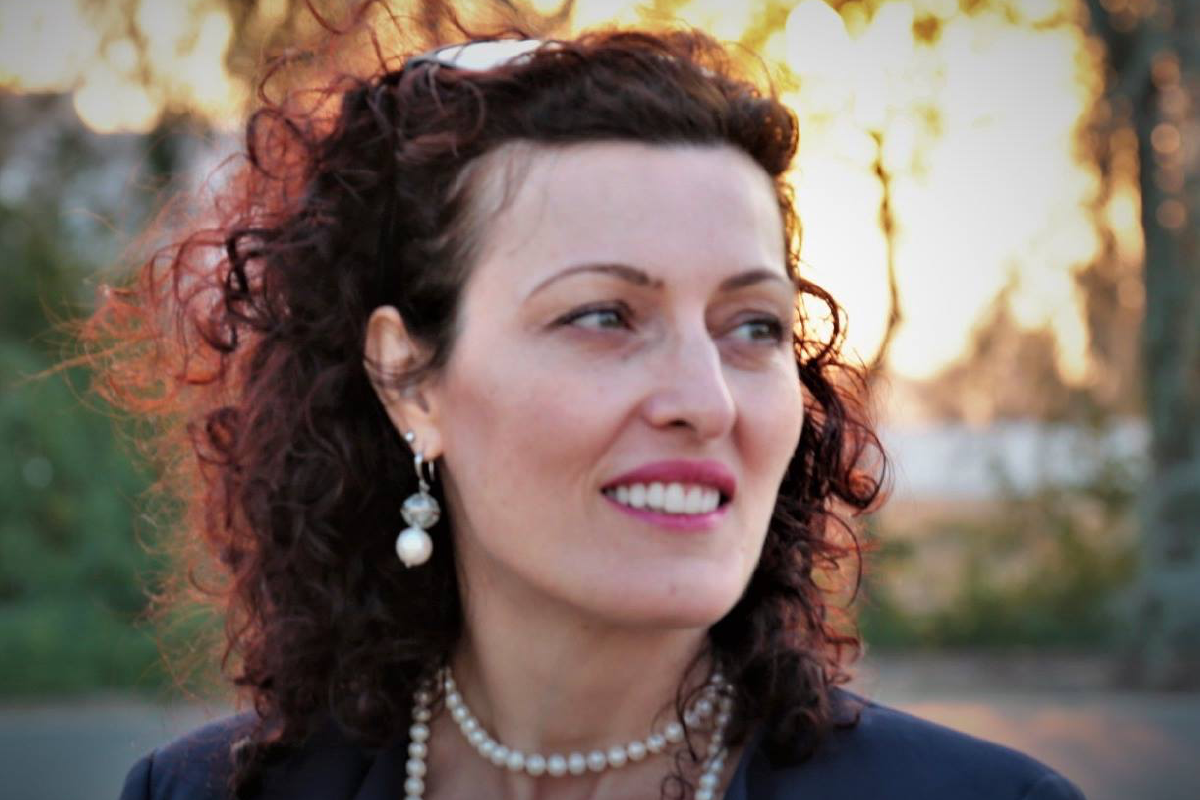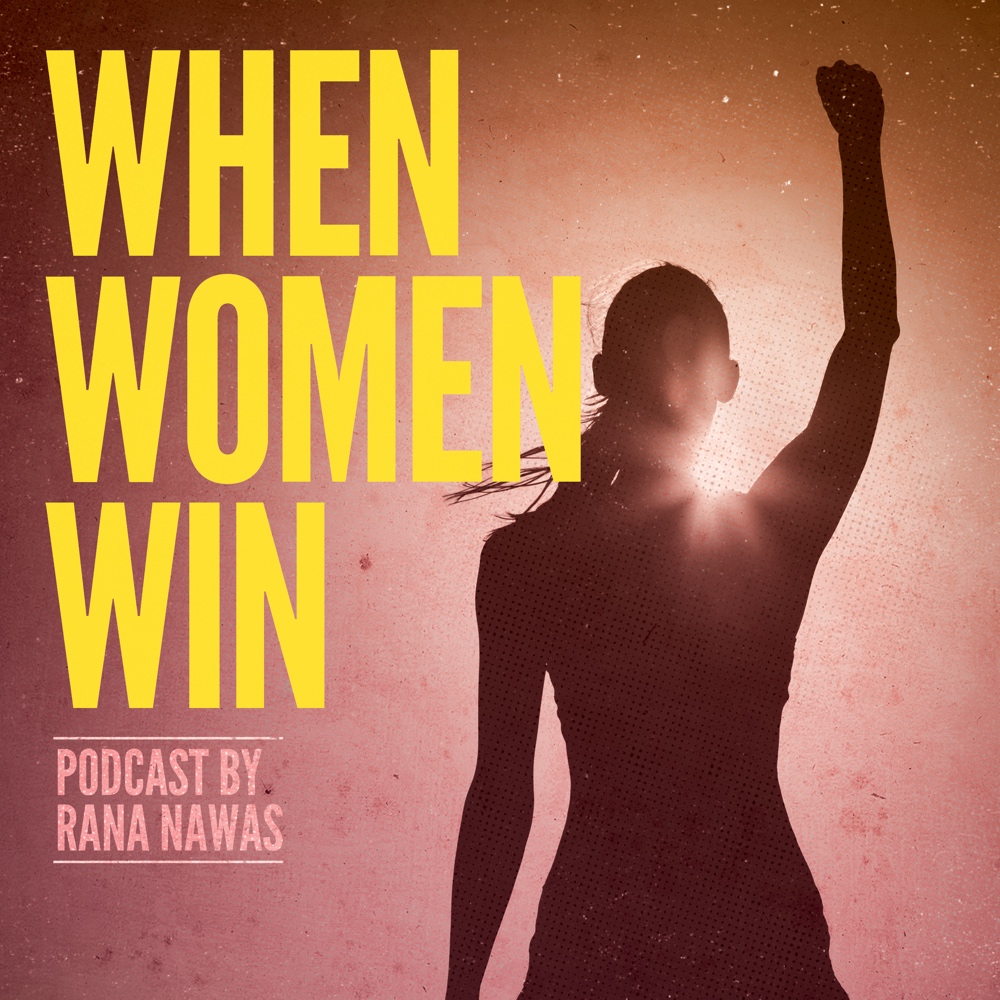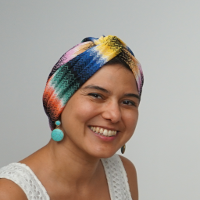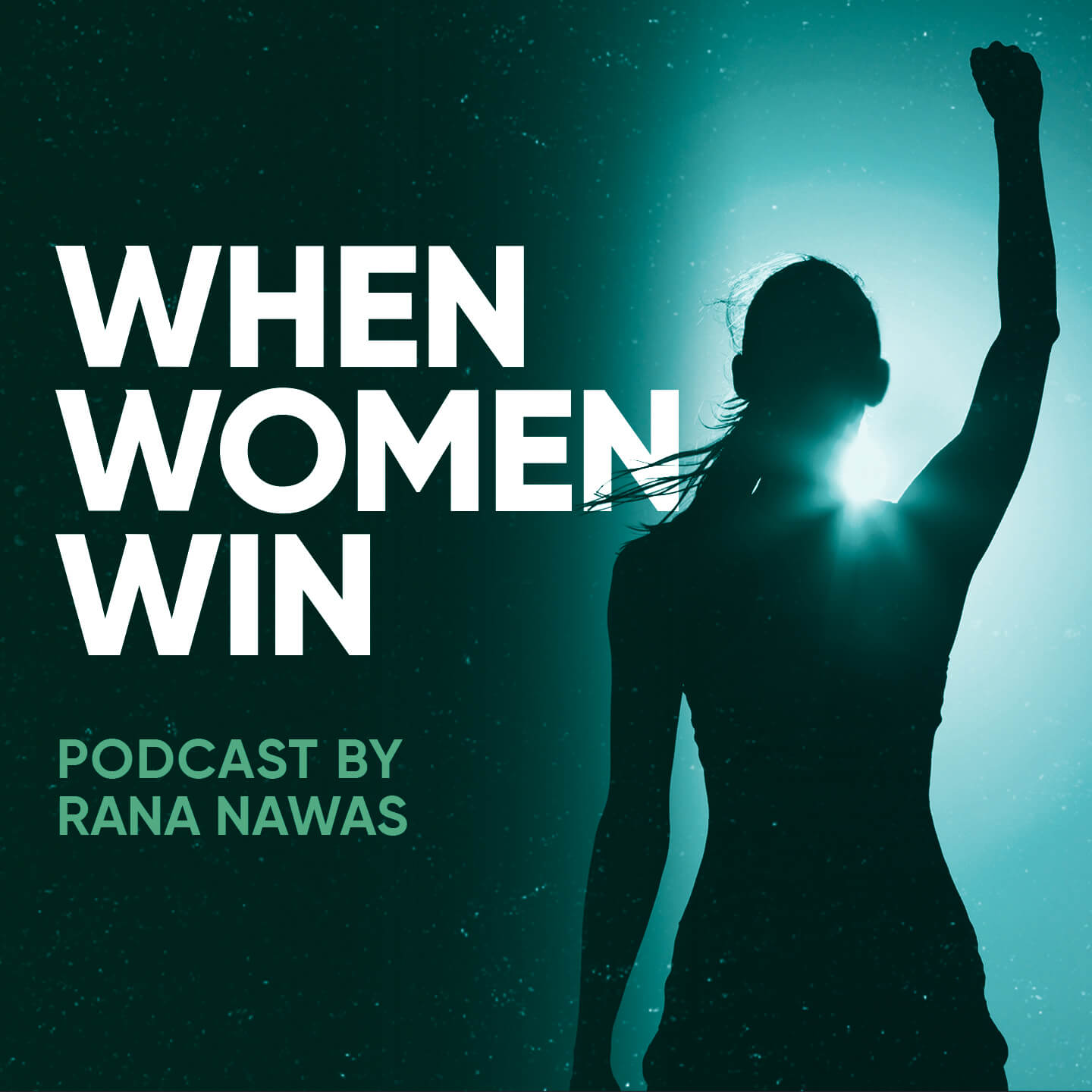
60% of our diet today comes from just 4 crops – out of a possible 30,000 farmable, palatable crops. This limited diet causes multiple health issues. How did we get here? What’s going on with agriculture? How do we fix it?
Seta Tutundjian, Director of Programs at ICBA, joins us for a deep-dive into crop-breeding and why it is so important for over 1B people on our planet.
Breeding crops and increasing food supply in challenging environments.
Seta Tutundjian is the Director of Programs at the International Centre for Biosaline Agriculture (ICBA), a non-profit joint venture between the UAE Govt and the Islamic Development Bank. She had spent 15 years working with USAID in Jordan, strengthening institutions and working on policy reform. During her last 4 years at ICBA, Seta has focused on breeding crops in the world’s most challenging environments.
I was shocked to learn how few crops are being farmed commercially relative to the huge variety of palatable species available on our planet: do you know that of a possible 30,000 palatable species, we cultivate only 150 crops? And 60% of our collective diet comes form just 4 crops? This limited diet has led to a lot of health problems, simultaneously obesity and malnutrition. We also discussed “super-crops” and the facts why quinoa is a winner.
The world’s soil is becoming more and more saline, and this is a huge challenge for agriculture. Two thousand hectares of arable land is being lost daily to salinity! We talked about how the poorest 1 billion people on the planet live in “marginal” environments, and how their lack of good soil or water limits their ability to farm their way out of poverty – and hunger.
My favorite quote was: “It is not just about food security but also nutrient security”.
If you would like to learn more from Seta, you can find her on LinkedIn and Twitter. To learn more about ICBA’s ground-breaking work, visit their website at www.biosaline.org
Read the Transcript
Rana Nawas: (00:00)
Hello ladies and gents. My guest on today’s show is a veteran of development and sustainability, Seta Tutundjian. Seta Tutundjian spent 15 years working with USAID in Jordan, strengthening institutions and working on policy reform. She’s currently the director of programs at the International Center for Biosaline Agriculture or ICBA, a nonprofit joint venture between the UAE government and the Islamic Development Bank. Seta has spent the last four years at ICBA where she focuses on breeding crops in the world’s most challenging environments. I learned that the world is becoming increasingly saline and this is becoming a huge challenge for agriculture. 2,000 hectors of arable land is being lost daily to salinity. We talked about how the poorest 1 billion people on the planet live in marginal environments and how their lack of good soil or water limits their ability to farm their way out of poverty and hunger. I was shocked at how few crops are being farmed commercially relative to the huge variety of palatable species available on our planet and the health problems that this limited diet poses. We also discussed how food security is not enough anymore and how countries are now looking at nutrient security to address rampant malnutrition. So let’s get into it. Seta, it’s so great to have you on the show. Thank you very much for taking the time.
Seta Tutundjian: (01:37)
It’s so great to be on the show, Rana. I’m an avid follower of yours, so it’s always great to be on something that you like.
Rana Nawas: (01:45)
Great. Alright, well let’s talk a little bit about where you work. Can you tell us? So what does ICBA stand for?
Seta Tutundjian: (01:51)
So I work at the International Center for Biosaline Agriculture. It’s a non for profit applied research for development center that was established in the late 1990s as an initiative between the UAE government and the Islamic Development Bank and the purpose of the center was to increase agricultural productivity in areas that were affected by salinity and which had difficut climatic conditions. So we do applied research as I mentioned, and that differs a little bit from basic research. You see what kind of research is already generated elsewhere and then you test them in real life and then based on that, we develop solutions on how you can grow your food under water scarcity conditions, under salinity conditions, under integrated lands and under different climatic conditions.
Rana Nawas: (02:50)
Stop, there is so much here that I want to get into. Okay well first of all, why did you start with salinity at the center?
Seta Tutundjian: (02:56)
So we started in salinity because as I mentioned it was an initiative between the UAE government and Islamic Development Bank and many of the Muslim countries in the 80s were facing salinity problems. Their agricultural lands basically were turning into salinized lands that you cannot produce. So they went to the bank with this problem and we were established as a center to look at what technologies are available to deal with this problem. And this is how the center started in 99 and we continued actually for the first ten year looking at this with the added mandate later on of integrated water resources management because water scarcity is also a big problem.
Rana Nawas: (03:39)
Yeah. I want to, I want to go into that. So for listeners, we have listeners in 129 countries, so they might not know, but we live in a very arid region. Maybe you can tell us more about water scarcity in the Middle East.
Seta Tutundjian: (03:50)
Yes. So in the Middle East, most of the top 10 water scarce countries in the world, a lot of them come from this region. So water scarcity is a big problem and producing our food for a growing population is another big problem. As is the heat and that is becoming even hotter now with climate change and, but by the way Rana, the salinity problem is now not a problem that is contained within developing countries, according to what we’ve heard communicated to us. Salinity in the past few years has been the biggest problem that the UN food and agricultural organization has been receiving as a complaint. We are, we have around 2000 hectors of arable land loss daily to salinity. So arable land means that land that is currently being cultivated for agriculture and 2000 hectors a day if you equate it over the past 20 years, we lost arable land the size of France and as you know, we have a growing global population which needs extra food. So this is currently proving to be a challenge on a global scale and that’s why in 2010 we moved from being only a center that targets Muslim countries to working in development at large across the globe.
Rana Nawas: (05:13)
Let’s go back to something you mentioned earlier, marginal environments. What exactly does that mean?
Seta Tutundjian: (05:18)
So we started working on salinity issues and then by 2004 we started working on water scarcity. By 2010 we moved to marginal environments. Which is, marginal environments are those environments which are constrained by a number of biophysical constraints, including for instance, land degradation. Poor soils, not always saline soils, but poor soils. Poor water quality, scarce water quality, but also by climatic challenges in terms of heat, in terms of drought dust. But concurrently marginal environments are also constrained by socioeconomic factors such as poor infrastructure, low prevalence of women in decision-making, weak value chains for agricultural produce. So for us, we look at targeting those areas whereby you have the biophysical constraints but you also have the socio economic constraints and globally around 1.7 billion people live in marginal environments, including the poorest 1 billion people who find it very difficult to find means to break out of poverty because traditionally the way out of poverty has been rural development through agriculture. So if you have these constraints that inhibit you from doing agriculture, how do you get out of poverty? There are very few chances available.
Rana Nawas: (06:45)
So the poorest in the world live in these marginal environments and don’t have access or don’t have the ability to grow crops to pull themselves out of poverty.
Seta Tutundjian: (06:53)
Yes, because if you’re living in an area where you have good soil, good land, you have rain, you can at least grow your food. You can feed your family. But if you’re living somewhere where you don’t have a job and the land outside doesn’t, isn’t of good soils. You don’t have the water to grow your food. So you’re not only poor but you’re hungry, as well.
Rana Nawas: (07:14)
It’s funny, you know, many months ago I had Dr Alma Obama on the podcast, on When Women Win and she does great humanitarian work in western Kenya and part of what she does is redefine poverty. So she goes to them and say you are not poor. The fact that you can grow stuff in your backyard means you are not poor.
Seta Tutundjian: (07:34)
Yeah, I agree. At least you can get out of the hunger dimension of poverty. Poverty has many dimensions and hunger is one of them. Education is another. So that’s a completely different field in terms of how you get out of poverty but if you have good land, at least you can go without being hungry.
Rana Nawas: (07:53)
Yeah and so what does ICBA do around marginal environments? How do you support them?
Seta Tutundjian: (08:00)
So we look at finding solutions, effective solutions, that are also sustainable for whereby you can grow your food in manners that, under water scarcity, under salinity, under hot climates and we have different aspects. So we work on a natural soil amendments. We work on how you can grow food, for instance, with brackish water, which is not fresh water but not as salty as seawater, but we also work on crops that you can irrigate with seawater. So a big component of our work is plant breedings or what we call under utilized plants or forgotten plants and these are plants that are not in the common diet. There are around 500,000 species of plant species and of those, 100,000 we’ve used as humans throughout history for different users, whether for our food, feed, building medicine for different things. Of these 100,000 we know that 30,000 are palatable for us. So we would enjoy the how they taste or some people would enjoy how their tastes and 7,000 we’ve used as humans throughout our history on earth as our food. But currently, we are cultivating of these 30,000 palatable crops, 150 crops only on a global scale and to make things a little bit more constraining, 90% of our food cultivation is less than 20 crops.
Rana Nawas: (09:45)
Out of 30,000 possible crops we could eat?
Seta Tutundjian: (09:48)
Yes, out of 30,000 possible crops we can eat, we are cultivating—90% of our cultivation for food is fewer than 20 crops.
Rana Nawas: (09:57)
Wow.
Seta Tutundjian: (09:58)
And in total we’re cultivating only 150 crops and our diet, 60% of the diet, the energy diet that we consume, comes from four crops. Which are rice, wheat, maze, or corn-nuts. You want to refer to it, and potatoes and this limitation of our diet has, is concerning, at least to us, it is worse a worrisome for many reasons but let’s talk about the health aspects. This constraining of the diet coincides with our observation of an increased rate of diet related diseases of overeating, for instance, such as obesity, but it also coincided with a malnutrition or nutrient deficiencies. So we have around 1.5 million people that have one or more nutrient deficiencies.
Rana Nawas: (11:00)
Million or billion?
Seta Tutundjian: (11:00)
Billion, yeah.
Rana Nawas: (11:01)
And these people are not necessarily hungry, right? It’s just that they’re eating crap.
Seta Tutundjian: (11:06)
It’s not crap like the initial before the current sustainable development goals, we had the millennium development challenges and under it we also looked for no hunger and at the time we looked at no hunger in terms of filling the belly or making people not go to bed hungry. That was one of the mottos, for instance. Currently with the new agenda, we defined or the global community found that you cannot go only with food security without nutrition security. You need to feed your children. You need to feed yourself with food that will make you, food that will fill you up, but also for that will provide the nutrients that your body needs and this is—and currently our diet, unfortunately, the limitations we have imposed on our diet is leading many to have nutritional deficiencies and plus with climate change, with the changing climate, this is posing another risk which is a food security risk because many of those staple crops or major crops that we depend on cannot perform as well under heat, which is a warmer climate or under water scarcity.
Rana Nawas: (12:26)
So Seta, knowing what you know now about nutrition and crops, what is your diet like?
Seta Tutundjian: (12:33)
So first, because I am gluten intolerant, my diet is limited. So I’ve already eliminated two of some of the major crops, which are wheat and barley, but I’ve also integrated a lot of other crops into my diet that six years ago I was not familiar with, such as, for instance, sorghum or millet, both of which are labeled in many of our stores as bird feed, although they’re much more nutritious for us as humans. I’ve integrated amaranth into my diet, quinoa. So there are many things, but my diet also, I’m more into plant based diet than an animal diet. I am not a vegetarian, but I try to limit my animal intake in terms of diets because of the carbon footprint. So it’s a mixture of diet.
Rana Nawas: (13:26)
Great, yeah. Well we’ve integrated amaranth, millet, quinoa, spelt and I think there was one more in my, oh and oats. What are oats like?
Seta Tutundjian: (13:38)
Oats, most of the oats in the market has gluten in it and spelt has gluten so I don’t eat it a lot but in the past I used to eat them.
Rana Nawas: (13:50)
Great, okay. So this is something that I wanted to ask you. You know, you mentioned 90% of our diet is based on four crops, rice, corn, wheat, and potato.
Seta Tutundjian: (14:01)
60
Rana Nawas: (14:02)
60% excuse me, and are these very water intensive crops to grow?
Seta Tutundjian: (14:07)
So it depends but most of them, like rice is a water intensive crop. Wheat is considered as a less water intensive crop but there are crops that require still less than wheat or barley than others.
Rana Nawas: (14:22)
Like what?
Seta Tutundjian: (14:22)
It’s a—we’re promoting more diversification which is we’re not saying one crop is bad, the other is better. We’re just saying that we need to have bigger diversity than 150 crops and in general. Among the crops, for instance, that we work on and that we’re behind and promoting is quinoa. Quinoa is a crop that can withstand heat.
Rana Nawas: (14:44)
You can grow it in hot climates?
Seta Tutundjian: (14:45)
You can grow it in hot climates, you can grow it in a variety of climates. So when we talk about quinoa, within quinoa you have several genotypes, more than 6,000.
Rana Nawas: (14:55)
What?
Seta Tutundjian: (14:55)
Yeah. So you have a variety to choose from. Some of them are for more temperate environments, some are for more hot environment. We at ICBA, we concentrate on the varieties that can withstand heat. They can withstand also a drought. They don’t require as much water. Actually to produce optimum quinoa production, you need less water than wheat, maize, barley, or rice would even give you a crop and the nice thing about the varieties that we’re working on, that they can also withstand salinity. So you don’t need to give them fresh water. You can give them brackish water or water that you cannot use for any of the other varieties.
Rana Nawas: (15:37)
Wow, quinoa sounds like a rockstar.
Seta Tutundjian: (15:38)
Yeah, it is. That’s why it’s also called a super crop because of its nutritional profile. So we look at the nutritional profile of quinoa. It is filled with micronutrients. It’s it has high portions of iron, of calcium, other minerals, of fibers, of protein. One of the studies that I’ve seen is that 10 grams of quinoa a day might be integrated into the diet of a child, could actually eliminate stunting in Africa and that’s one of the conversations we’re trying to open with other leading organizations that are working in Africa on how can you integrate it within the diet, you can integrate it as part of the bread mixture. It’s not a big portion of the diet, but it needs to be there and there are many other such crops, Rana.
Rana Nawas: (16:32)
What are other crops like quinoa? I want more super crops in my world.
Seta Tutundjian: (16:36)
So there are other super crops. We’re not working with other super crops because concentrating on breeding one crop, it’s a multi-year effort that takes a lot of resources. So our work on quinoa started in 2007 and we’re still working on the breeding. So there are centers around the world that do that, but ICBA, we’ve worked heavily on fodder grasses, which are grasses that you can provide as feed to animals and these grasses, they need around 40% less water than the other grasses that are currently used for animal feed and that water can be up to 60% sea water salinity. So these are grasses that you can introduce to areas where currently they cannot produce any animal feed to give their animals. So that is as an alternative and also we work on crops, for instance, part of the other crops that we work on, are crops that you can use for biofuels that do not compete with our food diet. Because in 2008, we had the world food crisis where the crisis went up. Partially that was because of the rise of use of biofuels as a climate change mitigation tactic. But if you’re using food products for biofuels, then you’re basically driving the prices up and the poor no longer are able to afford those crops. So at ICBA we’re working on a crop and we’re hoping to work on more than on other crops as well that you can use seawater to grow that crop for biofuels. So in that case, it doesn’t compete neither with arable land where you can grow food crops, nor would water, that would alternatively go for food crops.
Rana Nawas: (18:26)
Wow, that’s amazing. Okay. What are biofuels used for these days?
Rana Nawas: (18:32)
So there are many uses for biofuels. It is basically a plant base oil that is a substitute for fossil fuels.
Rana Nawas: (18:41)
So Seta, I’d like to change the direction of the chat and ask you a bit of a few personal questions. So how long have you been working in development now?
Seta Tutundjian: (18:51)
So I’ve been working in development since 1997.
Rana Nawas: (18:55)
Great.
Seta Tutundjian: (18:56)
So a little bit over 20 years now.
Rana Nawas: (18:59)
Okay and what achievement are you most proud of?
Seta Tutundjian: (19:03)
So I started my career in the commercial sector, Rana, and it was in marketing actually. I used to do a qualitative and quantitative research as a way to and integrate that into marketing plans. So in 97, by chance, I was hired by USA.
Rana Nawas: (19:24)
USAID?
Seta Tutundjian: (19:25)
USAID, to develop a water conservation campaign for Jordan. I’m originally from Jordan and Jordan is among the top 10 water scarce countries. So water scarcity is a big issue there. My biggest achievement I would think is that I integrated the marketing concepts into the communication for water scarcity and it was one of the first campaigns worldwide to integrate social marketing within fields that are outside the health and family planning field. It was starting in the nineties to explore how you can do that in other fields. So it’s basically you use the same four p’s that you use for marketing any product, but in this case you market a certain behavior or a certain policy change that you want to see affected. So I would consider that was my first foot in the development door and I never left it because it’s a nice feeling to be working when you feel that whatever you’re doing is at the end of the day contributing for a better world for everyone.
Rana Nawas: (20:36)
Yeah, sure. That’s amazing. But is it fun? What do you do for fun?
Seta Tutundjian: (20:44)
I like hiking or I used to like much more before I had kids. I’m now rediscovering my hobbies from hiking to painting. I Like to read a lot. Both fiction and nonfiction. I try to balance it.
Rana Nawas: (21:00)
And what’s a book you’ve recently gifted somebody?
Seta Tutundjian: (21:01)
So I gifted the “Tipping Point” recently to somebody because it’s one of my favorite books. It’s also into marketing. It’s how you get things into mainstream.
Rana Nawas: (21:12)
“Tipping Point” is one of my favorite books, but my favorite Malcolm gladwell has to be “Outliers.”
Seta Tutundjian: (21:18)
I haven’t tried that one, should I?
Rana Nawas: (21:20)
Then I’ll gift you that one. Brilliant, alright. Is there someone who has influenced your life or career?
Seta Tutundjian: (21:32)
Yes, actually I had a, one of my early bosses, she was a woman. Her name was Sicily and I still remember she was my boss probably for a year, a little bit over a year and she was a good mentor and before she left, she gave me a good piece of advice. She told me, you know, whatever you want to do, wherever you want to go, Seta, concentrate on your presentation skills and developing your writing skills. Those are the two skills that could take anyone anywhere if you have the technical skills developed as well and I took that to heart. I worked on those two skills and I started. When I look back, I think that advice has helped me a lot.
Rana Nawas: (22:18)
Oh, wow. That’s an actionable tip for listeners, work on your writing skills and presentation skills. Fantastic. That’s a great place to end. Thank you so much, Seta. Where can listeners find you?
Seta Tutundjian: (22:28)
So I’m on Linkedin the most, the most active on Linkedin and also on Twitter @seta4. 4 as a number 4 and @ICBA, of course.
Rana Nawas: (22:40)
Great. Thank you so much for your time. This has been a pleasure.
Seta Tutundjian: (22:43)
Thank you for hosting me.
Rana Nawas: (22:47)
I hope you enjoyed today’s episode. I’d love to hear from you so please head over to WhenWomenWinpodcast.com to give feedback. While you’re there, you can find all episodes and show notes and sign up for our monthly newsletter. Wherever you’re listening right now, do remember to hit the subscribe button to be notified of future episodes and please write a review when you can to let others know what to expect. Thanks and have a great day.


